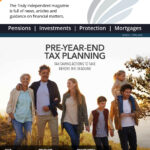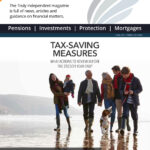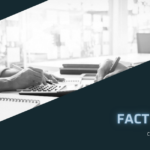Don’t miss the chance to make the most of valuable tax-efficiencies and allowances.
It’s important to take the time to give your finances a year-end check-up. The 2017/18 tax year ends on 5 April 2018, with the new tax year beginning the following day, on 6 April. These are important dates for financial planning, so it’s important you don’t miss the chance to make the most of valuable tax-efficiencies and allowances.
Time is running out to make important planning moves before this tax year’s end, so don’t delay – we’ve provided some of the key areas that could help you make the most of your money.
MAXIMISE YOUR INDIVIDUAL SAVINGS ACCOUNT (ISA) ALLOWANCE
The tax-efficient ISA allowance for the current tax year is £20,000 per person. Therefore, a married couple could put away £40,000 before the end of the tax year on 5 April. There is no Capital Gains Tax (CGT) and no tax on UK income, and also no need to declare this on your tax return. If you do not make use of your ISA allowances, they cannot be carried forward to the new tax year.
Children with a Child Trust Fund can also save up to £4,128 in the current tax year, or if they’d prefer to, transfer their savings to a Junior ISA (JISA), which are a tax-efficient way to build up
savings for a child.
Any adult under 40 is able to open a new Lifetime ISA (LISA) with a 25% annual bonus paid by the Government on every £1 invested up to an annual contribution limit of £4,000. LISA
contributions can continue up to the age of 50, and funds can be withdrawn tax-efficiently from age 60, or earlier for the purpose of buying a first home or for use in retirement. If you are buying a home with someone else, you can both take advantage of separate Lifetime ISAs.
DON’T OVERLOOK PENSION CONTRIBUTIONS
The rules around how much you can pay into a pension have become more complex. But the standard annual allowance is £40,000 per person in the current tax year. The standard allowance can be reduced if you earn above a certain limit or have taken pension benefits previously. You pay contributions net of basic rate Income Tax and your pension provider collects the tax relief from HM Revenue & Customs (HMRC).
Basic-rate tax relief is currently 20%. So, if you contribute £80 a month, £100 will be invested automatically in your plan – that’s an additional £20 at no extra cost to you. If you’re a higher-rate or additional-rate taxpayer, you can claim the extra relief from HMRC on your yearly tax return or by asking your tax office to adjust your tax code. The value of any tax relief depends on your individual circumstances. This is essentially free money, so don’t miss out.
TAKE YOUR PENSION TO THE MAX
Carry forward allows you to make use of any annual allowance that you may not have used during the three previous tax years, provided that you were a member of a registered pension scheme. This may be particularly useful if you are self-employed and your earnings change significantly each year, or if you’re looking to make large pension contributions.
To use carry forward, you must make the maximum allowable contribution in the current tax year (£40,000 in 2017/18), and you can then use unused annual allowances from the three
previous tax years, starting with the tax year three years ago. You can’t receive tax relief on contributions in excess of your earnings in a tax year, and you only receive higher-rate tax relief to the extent that you have paid it.
CAPITAL GAINS TAX (CGT) ALLOWANCES
Every individual has an annual CGT allowance which currently enables them to make gains on investments of up to £11,300 free of tax. Any gains in excess of the allowance are charged to CGT at either 18% or 28%, depending on the individual’s other total taxable income in the year the gain arises.
If unused, the allowance cannot be carried forward into the next tax year, so it is advisable to use this tax-free allowance each year in order to reduce the risk of incurring a significant CGT bill in subsequent years. Married couples can also make use of each other’s allowances via a transfer to maximise the tax-efficiency.
By checking your CGT exposure each year, you could reduce future liabilities. If appropriate, consider what’s known as a ‘Bed and ISA’ transaction. This is useful for investments held outside a tax-efficient ISA or pension, where there might be a CGT bill in future. By selling some or all your assets this year and then immediately buying them back within an ISA, you can use this year’s CGT allowance to move your investments into a tax-efficient environment. It’s important not to realise a profit above the CGT allowance, or to sell more of the investment than you can buy back within your ISA allowance – £20,000 in 2017/18, assuming you haven’t used any of it for other purposes.
NEW RULES ON INHERITANCE TAX (IHT)
The new ‘residence nil-rate band’ (RNRB) now enables a ‘family home’ to be passed wholly or partially tax-free on death to direct descendants. The amount of relief will be phased in over four years and will initially be £100,000 in 2017/18, rising each year thereafter to reach £175,000 in 2020/21. The RNRB is in addition to an individual’s own nil-rate band, and any unused nil-rate band may be transferred to a surviving spouse or registered civil partner.
In order to qualify, you must own a property or a share in a property, which you have lived in at some stage and which you leave to your direct descendants (including children, grandchildren or step-children). For estates over £2 million, the RNRB is reduced at the rate of £1 for every £2 over £2 million. In addition, it only applies on death and not on gifts or any other lifetime transfers.
SMALL GIFTS ARE EXEMPT FROM INHERITANCE TAX (IHT)
Take advantage of exemptions. You can give away up to £3,000 a year, which is known as your ‘annual allowance’, and this will be immediately exempt from IHT. This exemption can be carried forward for one tax year if unused. Therefore, it is possible for a married couple to gift away as much as £12,000 using the annual exemption, on the basis neither of them have used the exemption already in the current or previous tax year.
In addition, lifetime gifts to any person that do not exceed £250 in a tax year are exempt. Furthermore, lifetime gifts in consideration of marriage are also exempt – for example, parents can gift £5,000, grandparents can gift £2,500 and gifts of up to £1,000 can be paid from others.
ADDITIONAL-RATE TAXPAYERS
If you earn £100,000 or more, your tax-free personal allowance falls by £1 for every £2 you earn over £100,000. So if you earn £121,200 or more, you won’t receive a taxfree personal allowance at all. The additional rate Income Tax (45%) is also charged on earnings over £150,000.
Pension contributions and other tax planning options, such as putting income producing assets into a lower-rate tax-paying spouse’s name, could be used to reduce this.
TAX-EFFICIENT INVESTMENTS
The Enterprise Investment Scheme (EIS), Venture Capital Trusts (VCT) and the Seed Enterprise Investment Scheme are worth a thought. EIS investments offer CGT deferral.
With the reduction in most CGT rates, an election to carry back the EIS investment could reduce your tax bill on gains made during 2016/17.
UTILISE YOUR SPOUSE’S PERSONAL ALLOWANCE
If your spouse is a lower or even non-taxpayer and you have income producing assets (for example, buy-to-let property or even saving accounts), you could put these in their name to lower your overall Income Tax liability.
Married couples and registered civil partners who are basic-rate taxpayers and have not fully utilised their personal allowance can transfer 10% of the basic personal allowance to their other half. The wife / husband / partner receiving the transferred allowance will benefit from a tax reduction of 20% of the transferred amount. Assets can be passed between couples without any CGT liabilities. Transferring assets to joint names can also ensure that both spouses’ annual CGT exemptions are fully utilised in a sale.
NO MATTER WHAT KIND OF TAXPAYER YOU ARE, YOU NEED TO PLAN AHEAD
The 2017/18 tax year is coming to a close, and if appropriate to your particular situation there are some important tax planning issues and opportunities you may wish consider. No matter what kind of taxpayer you are, you need to plan ahead. Once the tax year has already ended, you’ve lost virtually any flexibility available to you to manage your tax affairs. To find out more or to discuss your situation, please call us – we look forward to hearing from you.
Time to carry out a review of your tax and financial affairs?
The end of the tax year on 5 April is once again looming large on the horizon. It is important to ensure that if you have not done so already, you should take the time to carry out a review of your tax and financial affairs to identify any tax planning opportunities and take action before it’s too late. To discuss your situation or for further information, please contact us.
For mroe information download our A Guide to Tax Planning










Follow us